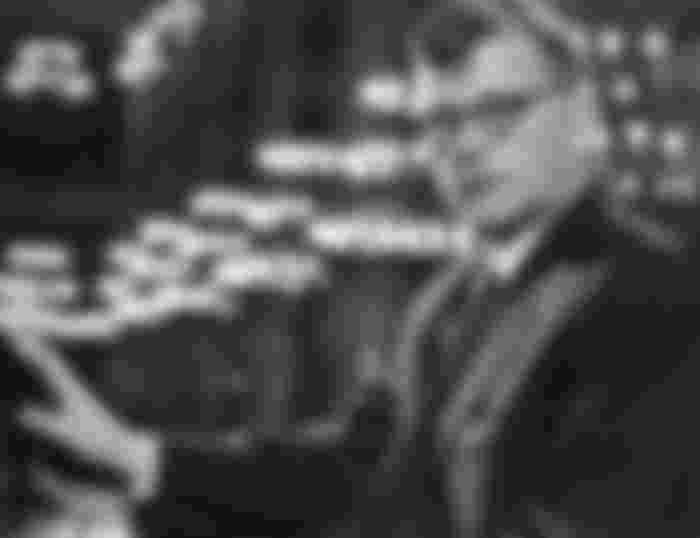Using expressions of the human experience as epistemology has assisted society with passing on explicit messages and go against or advance predominant belief systems. Expressions of the human experience have been molded since the beginning to permit the declaration of alternate points of view. Without a doubt, people have been utilizing different works of art to convey, engage, and articulate their thoughts. Though workmanship is a main innovative instrument that assorted networks use to state their viewpoints and societies quietly, it has likewise been utilized to fill explicit needs utilizing prohibitive approaches.

Well known author Dmitri Shostakovich used music as a type of craftsmanship to state socio-political viewpoints repudiating the severe Soviet system, which prompted more noteworthy mindfulness and more uprisings by the stifled residents of the USSR. Mexican-Americans utilized road workmanship to pass on the way of life of the distorted Chicanos during the Chicano wall painting development prompting training changes, for example, the execution of bilingual schooling preferring the Mexican-American people group. The contemporary American vocalist Donald Glover has utilized workmanship in expressive faculties to introduce a therapeutic encounter and study to watchers about the domineering thought and movement of the perspective on a commonplace person of color in the public arena.

Dmitri Shostakovich skillfully used the creation of music as a way to display his own perspectives. During the twentieth century, because of the two fundamental ranges of authority, the US and USSR, and their developing pressures all through the Cold War, the Soviet government had various restrictions on different types of media, explicitly music, that proceeded to influence writers and the residents of the socialist system altogether. The Soviet Union just permitted music that "was to be characterized by its availability, tunefulness, expressive conservativism, and society propelled characteristics. It was to be idealistic, trying to gallant thrill" (Fay 89). During the exacting socialist system, voices and assessments were abused so everything adjusted to one shared, exemplified the possibility that was strong of the public authority and depicted satisfaction and solidarity under it, like Ivan Dzerzhinsky's show, Tikhii Don, which turned into the model for communist authenticity in music as it included unmistakable subjects of enthusiasm with straightforward, cheerful songs. This foretells how Shostakovich, a Russian author, and musician, repudiates the limitations to adjusting just to what he needs and along these lines concealing inventively in the craftsmanship the socio-political messages that the Soviet residents in the end figure out how to decipher.
One of Shostakovich's works that conflicted with the Soviet government's principles was the play Lady Macbeth of the Mtsensk District. On January 26, 1936, Stalin went to visit the presentation, and afterward a simple two days after the fact, there was an "appearance of an unsigned article, 'Obfuscate Instead of Music,'… [which] reprimanded the show… imperfections [which] were compared with the unimportant average formalism… This was differentiated to the 'real,' straightforward workmanship requested by the Soviet masses" (Fay 84–85). The Soviet media quickly exploded with analysis of the creation, scarcely after it had been performed. The media utilized by the Soviets was a successful method to depict the prevalent views that the public authority needed to let out and to freely embarrass the works that it didn't care for so residents comprehended that particular activities were denied. The Soviet government utilized different types of media and coercive techniques to depict a particular prevailing belief system. Interestingly, the residents utilized different types of articulation, craftsmanship, and music innovatively to pass on their abuse and certifiable socio-political sentiments.
Road workmanship, especially during the Chicano painting development, has likewise been another huge type of craftsmanship that has filled in as a vehicle for editorial or reactions to government strategies. Road workmanship is profoundly conspicuous in regions where there is a lot of restraint of the residents' voices as it is a public method to namelessly partake in socio-political editorial and demonstrations of disobedience and hostility against government belief systems. During the 1960s, the Chicano painting development involved the residents in the southwest barrios who utilized structure dividers to portray the mistreated Mexican-American culture. It was said that the Mexican-Americans "raised their voices, generally quieted around then, to request better portrayal at all degrees of society… the development… The production of these paintings… an immediate response to the social, financial, and political conditions that the Chicano people group was living in " (Martin). The greater part of the unmistakable pieces portrayed victimization native individuals. Road craftsmanship was broadly utilized wherever as there was no schooling vital; it was straightforward, notwithstanding shading or race. The road workmanship represented and gave a personality to the distorted or unrepresented voices and local area viewpoints. It permitted Mexican-Americans to secretly and securely spread consciousness of different issues, offer analysis, or address a political or social perspective as there was no name to the fine arts in the city.

Through the video and tune "This Is America," Donald Glover remarks on the American obsession with industrialist utilization, broad communications specifically, and how much brutality and the number of inconsistencies live in this utilization. Glover moving as upheaval and craze devour the foundation connotes how society is persistently diverted from history, particularly questionable or stifled variants of dark history. In broad communications, there is regularly commodification and gathering of African Americans to such an extent that possibly they are rich by being rappers or "hotshot" or resort to viciousness to live. The old vehicles in the video address that not every person can manage the cost of new, ostentatious vehicles, as a rule found in rap music recordings. Before all else, when Glover shoots the man, he takes what is accepted to be the Jim Crow position. Jim Crow laws were a progression of bigoted isolation laws in the Southern United States, and the term Jim Crow was utilized as a hostile name towards individuals of color. After any firing, the firearms are put cautiously in red materials while the bodies that have been shot are hauled off, showing how individuals regularly esteem weapons over people of color. Glover is accepted to be wearing jeans and yellow shoes that used to be worn by Confederate officers. This garments fills in as a token of the savagery and predisposition that has been verifiably exacted upon African Americans. At a certain point in the video, a kid shown moving on top of a vehicle as he shoots what seems, by all accounts, to be dollar greenbacks out of an air rifle draws an equal between broad communications amusement dependent on free enterprise just as the viciousness that comes. The scene where Donald Glover shoots the congregation ensemble recommends the Charleston firing from which no firearm limitation laws were passed or any move is made. It is likewise reminiscent of how the media regularly deflects center from these shootings. The manner in which Glover moves smoothly between vicious demonstrations represents how America does precisely so with mass shootings. In the video, after a man jumps off the railing and ends it all, the clasp comprises of grinning and moving dark kids. This essentially features the commodification and assignment of dark culture. Through these perspectives, Glover sends the message that America utilizes amusement by dark superstars to divert from the demise and savagery happening behind the scenes. It additionally features how Black American lives are frequently degraded and are regularly seen as worth all the more just on a playing court, field, or as a rapper.
Workmanship has been utilized by society in the past to state untouchable perspectives or viewpoints. In particular, it has been utilized by many, from Shostakovich, who utilized his music to negate the severe Soviet system, to the Mexican-Americans in the Chicano wall painting development where road craftsmanship was utilized as an effectively open stage for the portrayal of underrepresented societies to Donald Glover who used music and music recordings to communicate his questionable perspectives on the individual of color in current American culture. These models are only a couple approaches to portray how workmanship assumes a great part in the public eye as a methods for abused individuals to acquire a voice.



Art is important in its field, in every society. You mentioned some interesting facts, which makes person think differently when reading.